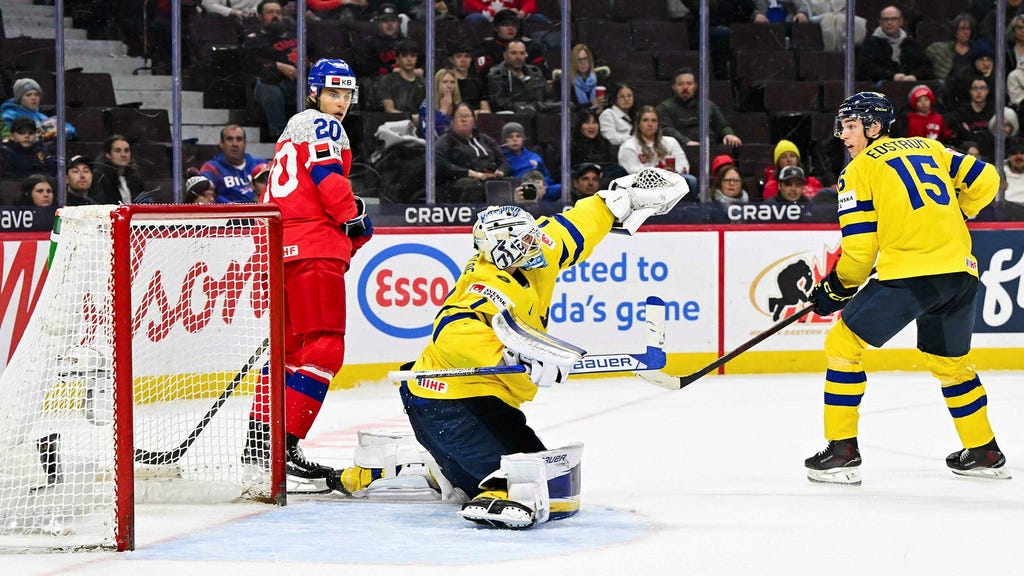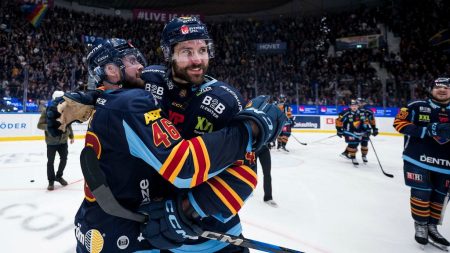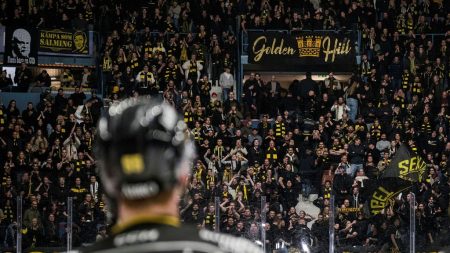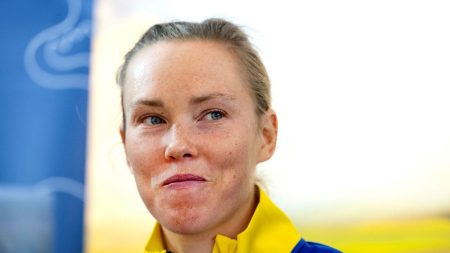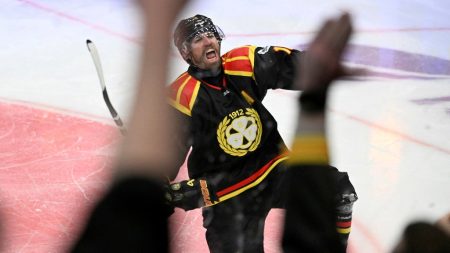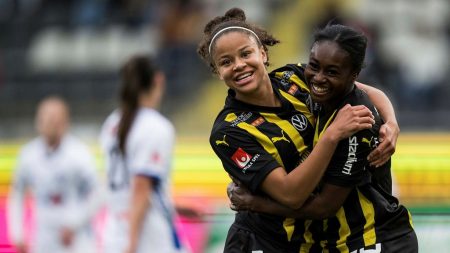Sweden’s Goaltending Switch in the Bronze Medal Game
Heading into the bronze medal game against the Czech Republic, the Swedish national team management made a significant decision: a change in goaltenders. Melker Thelin, the primary goaltender throughout the World Junior Championship (WJC), was replaced by Marcus Gidlöf. This decision stemmed from Thelin’s struggles in the semifinal against Finland, where he conceded goals deemed too soft.
This change marked only Gidlöf’s second appearance in the tournament. His prior game action came against Kazakhstan on December 27th. Subsequently, the 19-year-old had been relegated to the bench, observing his teammates’ battles from the sidelines. The bronze medal game offered a chance at redemption, an opportunity to prove his worth on the grand stage. Gidlöf seized the moment, delivering a commendable performance. Throughout regulation and overtime, he showcased his prowess, denying the Czech forwards on numerous occasions with timely and crucial saves. His performance was elevated further in the ensuing shootout. Gidlöf stood tall, thwarting several Czech attempts and nearly single-handedly securing the bronze medal for his team. His heroic efforts, however, were ultimately undone by the Czech Republic’s Eduard Sale, who finally managed to break through Gidlöf’s defenses, sealing Sweden’s fate.
Standout Swedish Players and Wahlberg’s Forward Dominance
While the goaltending situation took center stage, several other Swedish players also delivered noteworthy performances throughout the tournament. The defensive pair of captain and star player Axel Sandin Pellikka and Tom Willander consistently demonstrated their skills and leadership, anchoring the Swedish blue line. However, the standout forward for Sweden was undoubtedly Anton Wahlberg. In a highly competitive field, including talented players like Otto Stenberg and David Edstrom, Wahlberg consistently shone, demonstrating offensive prowess and a tenacious work ethic. His two-way play and offensive contributions were vital for the Swedish team throughout the tournament. He was a force to be reckoned with on the ice and played a key role in their journey to the bronze medal game. His performance earned him well-deserved recognition as a key player in the squad.
Looking Ahead to Next Year’s WJC and a Rebuilding Phase
This year’s WJC roster featured a limited number of under-age players, a strategic decision by head coach Magnus Hävelid. Initially, only four players below the age of 19 were selected: defenseman Viggo Gustafsson, and forwards Victor Eklund, Linus Eriksson, and Jack Berglund. An unfortunate injury to Berglund during the final exhibition game further reduced this contingent to just three 18-year-old players. This unusually low number of under-age participants creates a unique situation for the Swedish team, necessitating a significant roster overhaul for next year’s tournament. Coach Hävelid will effectively be building a nearly entirely new team, integrating a fresh wave of talent into the squad. However, amidst the rebuilding process, a beacon of hope emerges in the form of 18-year-old Victor Eklund. His exceptional performance in the bronze medal game, arguably Sweden’s best player on the ice, offers a promising glimpse into the future. Eklund’s display of skill and composure suggests that he could be a cornerstone of the Swedish team in the years to come.
Sweden’s Under-Age Players and the Future of the Team
The limited number of under-age players in this year’s WJC roster highlights a deliberate approach by the Swedish team management. With only three players born after January 1, 2004, the team was primarily composed of players eligible for the 2023 tournament. This decision likely reflects a focus on maximizing the current year’s potential while also acknowledging the need for a transition period in the following year.
The experience gained by the younger players, especially Eklund, will be invaluable as they assume more significant roles in the future. While the lack of under-age players might raise questions about the immediate future, it also presents an opportunity to build a cohesive and experienced team for the coming years. The experience gained by the few under-age players in the high-pressure environment of the WJC will be invaluable for their development. They will be expected to contribute even more heavily to the team’s success in the coming years, building on the foundation laid during this tournament.
Building a New Team for the 2024 WJC
The task before Magnus Hävelid is substantial: crafting a competitive squad for the 2024 WJC largely from scratch. This presents both challenges and opportunities. He has the chance to mold a team in his vision, integrating new talent and establishing a distinct playing style. However, building team chemistry and cohesion within a short timeframe will be crucial. Identifying and developing emerging talent will be paramount to success. The scouting department and coaching staff will need to work diligently to evaluate potential candidates and ensure that the selected players are equipped to compete on the international stage.
The Importance of Eklund’s Emergence
Victor Eklund’s standout performance in the bronze medal game provides a silver lining for the Swedish team. His emergence as a key player, despite his youth, signals his potential to become a leading figure in the national team setup. Not only does his performance offer hope for the future, but it also sets a high standard for other young players aspiring to represent Sweden. His performance boosts the morale of the fans and serves as a symbol of hope for the future. Eklund’s growth over the coming year will determine the future success of the Swedish team in international competition.





